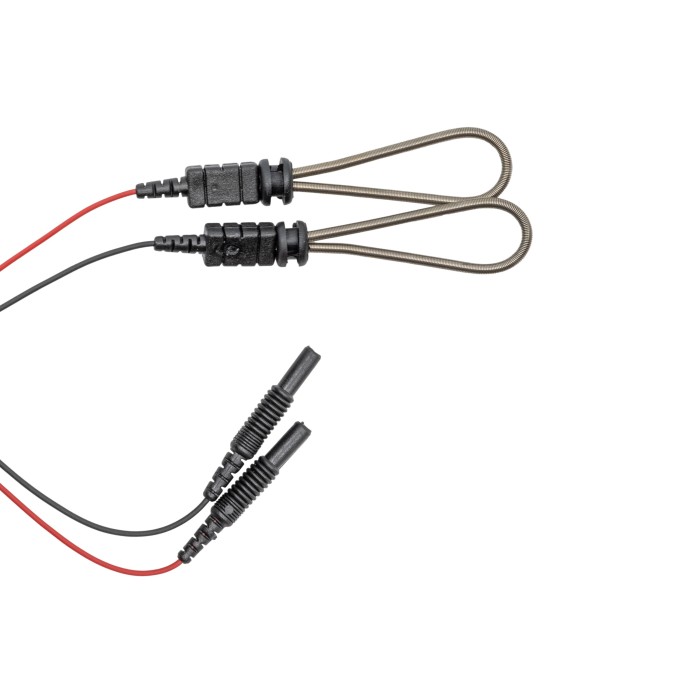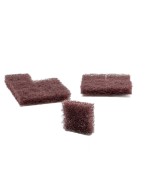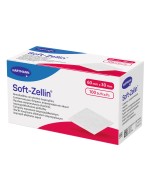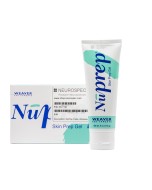Digital Ring Electrode (Strong, Elastic Spring)
Digital Ring Electrode - Strong version, elastic steel spring electrode 2.5mm diameter, 150cm cable length, DIN 1.5mm touch-proof (TP) sockets. One Digital Ring Electrode with two stimulation rings per pack.
This Digital Ring Electrode is made for NCS-examinations (nerve-conduction studies) and can be used to record or apply an electrical stimulation at the desired location on fingers or toes. It can also be used for both EMG and EP applications.
This Digital Ring Electrode model comes with a strong steel and elastic fastening mechanism. It is equipped with two steel stimulation electrodes, one for the positive (+ anode) and another for the negative (- cathode) pole. Digital ring electrodes come pre-assembled with a 150cm cable (shielded wire) and terminate in two DIN 1.5mm touch-proof (TP) sockets (female connector). It has a lifetime of 300 uses when used correctly. The loop of the stimulation electrodes is 24mm in length and 2.5mm in diameter.
When using the digital ring electrode in its recommended fields of application, clean the patient's skin with a damp cotton ball before fastening to either the subject's fingers or toes. After each use, clean the electrode with a damp cloth and mild detergent.
One Digital Ring Electrode (Strong, Steel Spring) version per pack.
Technical Specifications
- Electrode material: Thick Steel Spring (2.5mm diameter)
- Loop length: 24mm
- Cable length: 150cm
- Connectors: 2 x DIN 1.5mm touch-proof (TP) sockets (female connectors)
- Lifetime: Semi-disposable (300 cycles)
Application Note
- Prep the subject's skin at the desired stimulation/recording location.
- Open the fastener/velcro strap of the electrode.
- Fix the digital ring electrode at the desired location (toe or finger).
- Connect the DIN 1.5mm touch-proof (TP) connectors to the electrical stimulator or biosignal acquisition system.
- Check the signal quality. Apply a minimal amount of electrolyte gel if the signal quality is not satisfactory.
- After use, remove the digital ring electrode and clean the electrode with a mild detergent or disinfectant.
Note: Do not sterilize digital ring electrodes!









 Australia & New Zealand
Australia & New Zealand  Canada
Canada  European Union (EU)
European Union (EU)  France
France  Germany
Germany  Japan
Japan  Switzerland
Switzerland  USA
USA  International
International